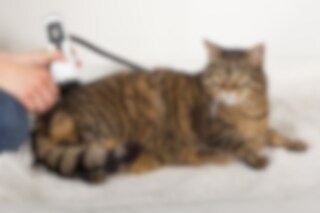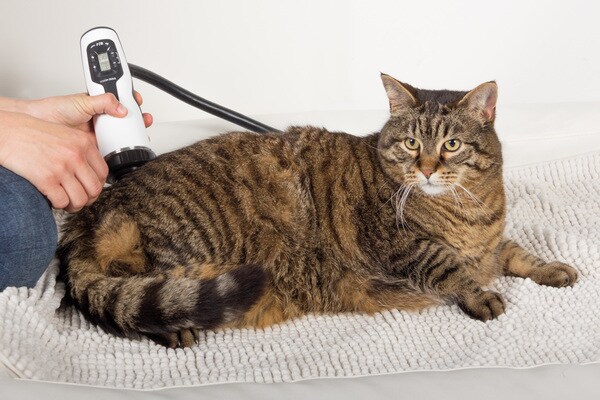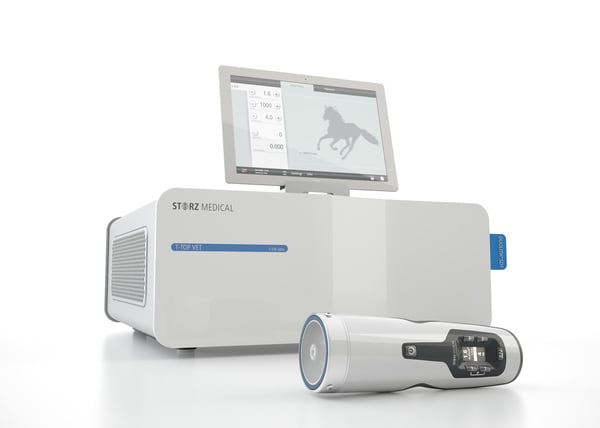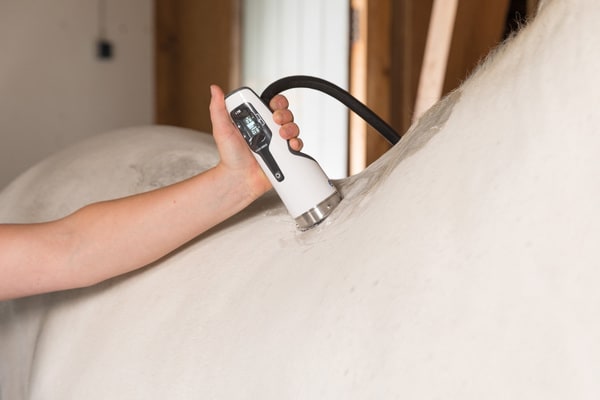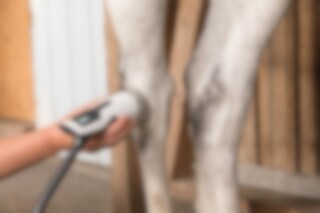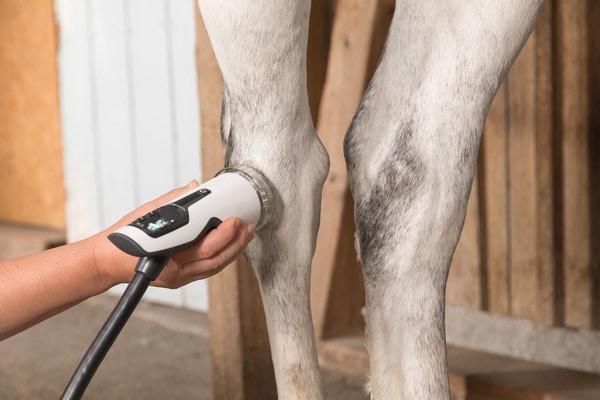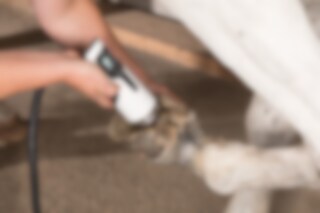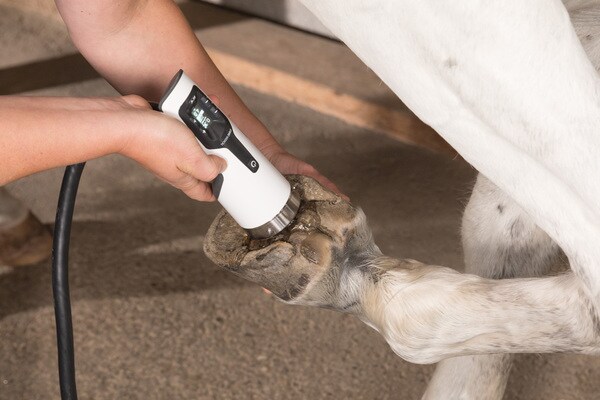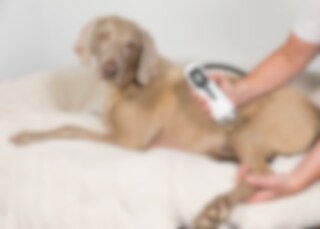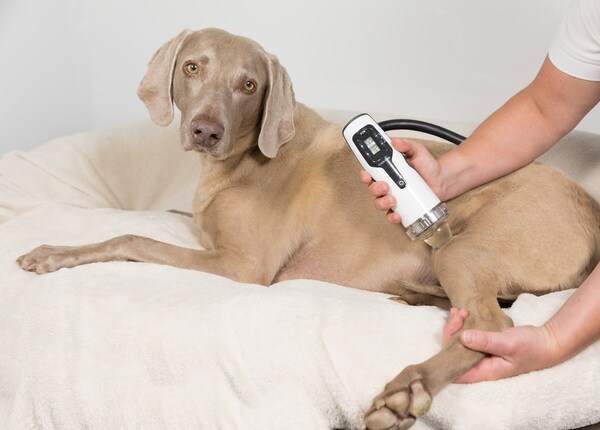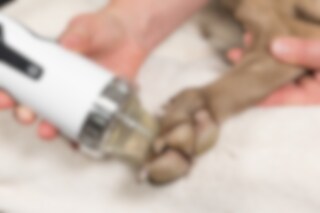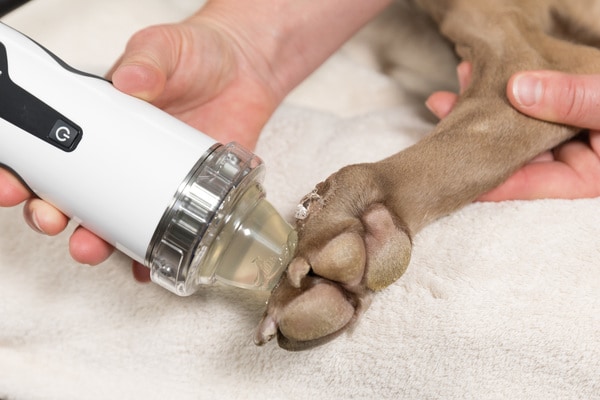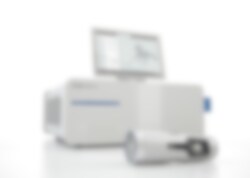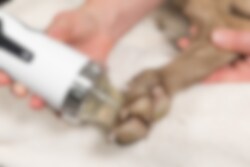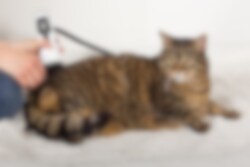Extracorporeal shock wave therapy (ESWT) was first used for the
treatment of orthopaedic disorders in the mid-1990s. Since then, it has become a standard procedure in pain therapy
in humans, horses and small animals. Shock wave systems available in the market today use radial pressure waves
or focused shock waves. Focused shock waves are ideal for the treatment of deep target areas, whereas
pneumatically generated radial pressure waves are used for the treatment of superficial disorders.
What are the effects of shock wave therapy? Shock waves have been demonstrated to produce antibacterial and anti-inflammatory effects. Additionally, growth factors have been found to increase in blood vessels, bones and connective tissue. As well as instant analgesic effects observed during the therapy, shock waves primarily have a long-term influence. Generally speaking, it can be said that the biological effects induced by shock waves produce a time-shifted and sustained response inside the body. However, pain tolerance differs between horses and small animals, and they respond differently to shock wave therapy. As a consequence, accurate diagnostic examination and differential diagnosis are fundamental pillars of successful treatment.
Indications in horses
- Insertional desmopathy
- Tendinopathy
- Osteoarthritis
- Fissures, stress fractures, osteolysis
- Ligament injuries
- Degenerative suspensory ligament desmitis (DSLD)
- Podotrochlosis
- Kissing spines
- Muscle treatment (trigger points, tensed muscles)
- Wound healing
- Scar tissue
Indications in small animals, especially dogs
- Tendinopathy
- Osteoarthritis (e.g. spondylarthritis)
- Hip and elbow dysplasia n Fissures, stress fractures
- Osteochondritis dissecans (OCD)
- Cauda equina syndrome
- Muscle treatment (trigger points, tensed muscles)
- Wound healing
- Scar tissue Advantages and benefits of ESWT
- Fast alleviation of pain or even complete pain relief
- Accelerated healing process
- No side effects
- No sedation or anaesthesia required
- Mobile application
- Outpatient treatment
- Reasonable and predictable costs
- No more than 3 to 5 treatments
Features and benefits
- Mobile use (carrying case for transport)
- Effective and non-tiring handling without having to move away from the patient
- All controls (buttons and display) directly on the handpiece
- Reduced revision costs thanks to easy change of coil
- Focal zone depth: 0 – 65 mm
- Therapeutic effectiveness: up to 125 mm penetration depth
- Exchangeable stand-offs for precise treatment
Technical specifications – DUOLITH SD1 T-TOP VET »F-SW ultra«
System weight: 24.0 kg
Extra-long handpiece cable (2.55 m)
Energy: 0.01 – 0.35 mJ/mmÇ, cable length 2.55 m
Energy (optional): 0.01 – 0.55 mJ/mmÇ, cable length 1.60 m
Optional control via 10" touch screen


